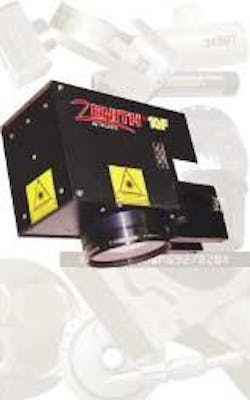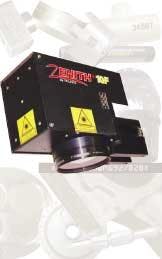Marking with fiber lasers
Ytterbium fiber laser marking systems offer advantages over diode-pumped, solid-state lasers
Because lasers are primary light amplifiers it is no wonder that the search for more powerful, more efficient, and the most reliable solid-state light amplifier for industrial applications has resulted in adaptations of a variety of lamp-pumped and diode-pumped amplifiers for lasers used in marking and engraving. A unique light amplifier platform to be adapted for laser marking and engraving is found in Ytterbium fiber amplifiers.
Developed in the late 1980s, these lasers found their initial niche in communications and military applications. Now, Ytterbium fiber laser amplifiers are being used in commercial and industrial applications where they operate on 24/7 duty cycles.
They have been available from the early 1990s when Japanese companies were the first to use this type of laser for direct part marking of integrated circuit packages used in the microelectronics industry. It is estimated that through 2003 more than 800 Ytterbium fiber laser marking systems have been sold to industrial manufacturing facilities primarily in Asia and North America.
The heart of the technology is a proprietary actively clad Ytterbium fiber, more commonly known as Ytterbium fiber-to-fiber lasers. The near-infrared wavelength of Ytterbium fiber at 1060 nm enables these fiber lasers to be used on applications where traditional Nd:YAG and Nd:YV04 lasers were once selected.
Ytterbium fiber lasers are special because of their extremely efficient optically pumped design. Pumped by a series of diode lasers, these lasers develop remarkably high gains from a relatively low light source. Another important consideration for use of this type of laser for marking and engraving is that the active clad fiber pumping technique creates coherence in the beam structure that closely approaches a Gaussian beam intensity profile.
The result of this technology is a small, compact, robust, energy-efficient, air-cooled, solid-state laser that develops high peak-to-peak output laser energies and near perfect beam profiles for direct part marking on a wide variety of materials.
Traditional diode-pumped solid-state lasers have optical fiber light sources that are used to convey light to a remote crystal lasing medium, most commonly Nd:YAG or Nd:YVO4. Conventional diode-pumped solid-state lasers adapted within marking systems, can correctly be described as a remote diode light source with a fiber-delivered light that is end-pumped into a solid-state crystal. These types of diode end-pumped systems represent the majority of diode-pumped solid-state and diode-pumped solid-state laser marking systems on the market today.
End pumping the crystal laser medium with an optically pure fiber-optic cable forces the designer to place the external lasing crystal and intra-cavity laser mirrors in close proximity to the laser/galvo output nearest the work piece. This design consideration promotes a higher potential for optics contamination and a potential for thermal lensing of the crystal caused by heat loading within the laser cavity. In addition, placing the laser crystal with its associated optics near the work piece increases the possibility for optics realignment caused by any inherent vibration of the work enclosure. More drastically, inadvertent damage to the laser crystal and intra-cavity optics is increased should a work piece crash into the galvo/optics assembly.
To counter these potential problems manufacturers of traditional diode-pumped solid-state laser markers have introduced several solutions. To prevent optics contamination, manufactures have placed the laser pumping chamber and associated optics in a metal can by simply extending the galvo assembly enclosure. To prevent thermal lensing caused by heat build up in the extended galvo enclosure, thermoelectric cooling plates or water-cooling have been incorporated. To assist in optics and part realignment, a co-focal through-the-lens red light diode has been added to most designs.
Early adaptors of the diode end-pumped solid-state lasers used in industrial laser marking systems suffered from unexpectedly high failure rates for their systems. Only recently have mainstream laser marking system manufacturers begun to realize the promised potential of traditional end-pumped solid-state lasers. Today the top diode-pumped solid-state laser marking system suppliers consistently provide marking systems that obtain mean time between failure rates (MTBF) approaching 15,000 hours.
The Ytterbium fiber-to-fiber laser markers offer a unique concept for laser beam generation; the optical fiber itself is the lasing medium. With no laser crystal or intra-cavity optics near the galvo assembly the entire beam steering/galvo mount assembly is reduced to a compact, lightweight package.
An added benefit of a true solid-state design is that pumping chamber optics is grown into the active fiber assembly. Another benefit of this solid-state design is the built-in ability of the system to automatically monitor the output power of the laser source. This self-calibrating feature constantly provides minute feedback, keeping the output power constant regardless of variations in incoming voltage or any possible slight degradation of the individual diodes. Even in the unlikely event of a failure of one diode (there are multiple pumping diodes with every system) the other diodes will automatically adjust their power to compensate for the loss.
Lacking the external lasing crystal and laser mirrors of fiber-delivered end-pumped lasers (which must be placed in close proximity to the work area), the smaller package size of the fiber-to-fiber laser allows positioning of the laser galvo assembly in almost any angle, giving an almost unlimited angle of attack for marking directly upon even the most difficult part configuration.
The efficient design of Ytterbium fiber laser markers greatly reduces the effects of optic contamination, shock, vibration, and thermal lensing. The potential for crystal damage or intra-cavity optics realignment is eliminated with this design. Co-focal through-the-lens red light diodes are still available with Ytterbium fiber laser markers but function primarily as a part positioning/dry run feature.
Ytterbium fiber-to-fiber lasers show high reliability in the most demanding field applications. The early adaptors of this technology are reporting MTBF of greater than 50,000 hours, three times the longevity of the best end-pumped solid-state laser marking system.
The monolithic solid-state design of the Ytterbium fiber laser is a solution for the industrial demands of direct part marking. The near-infrared wavelength of Ytterbium fiber at 1060 nm allows the fiber laser to replace traditional Nd:YAG and Nd:YV04 laser markers in most manufacturing applications.
Smaller, more lightweight, and easier to integrate into work handling designs, Ytterbium fiber-to-fiber laser marking systems with built-in power monitoring feedback circuits offer the added bonus of unparalleled reliability over the older diode-pumped solid-state laser designs.
As a field-proven technology with several thousand of these types of laser amplifiers in use worldwide, Ytterbium fiber-to-fiber lasers are a unique and exciting answer to the search for more powerful, more efficient, and more reliable solid-state light amplifiers for industrial part marking.
Orlan Hayes is the laser product sales manager for the Telesis Laser Group, Circleville, OH, [email protected].


